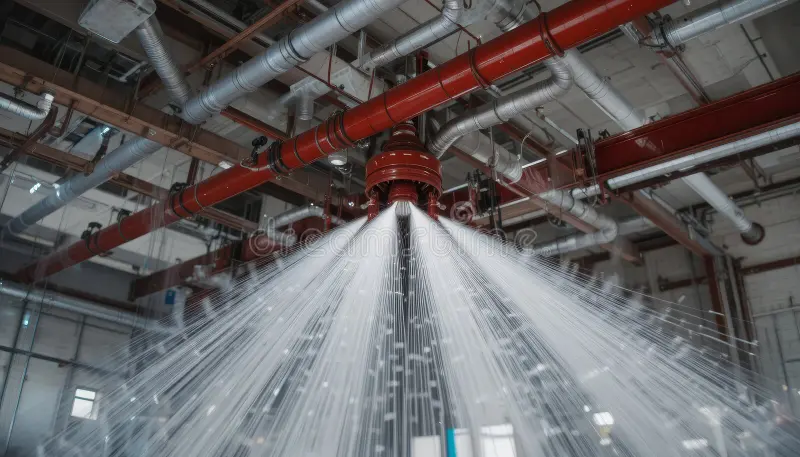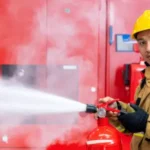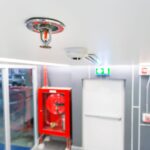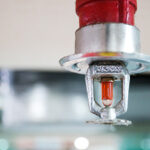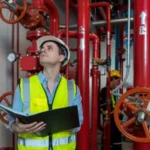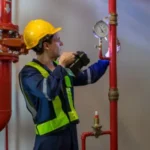Have you ever wondered what guards a building against fire before it gets out of hand? Fire sprinklers are that quiet hero. They don’t only safeguard property—they also save lives. However, here’s the key point: sprinklers only function effectively if they’re well-designed, properly installed, and regularly maintained. Details matter when it comes to getting them just right, providing people with more time to escape safely and minimizing damage.
Read on!
What Fire Sprinklers Are
In plain terms, fire sprinklers are a network of pipes, valves, and sprinkler heads. It automatically turns on when the fire breaks out and spreads water, which douses, or quells the fire. Fire suppression efforts, such as sprinklers, control the fire’s spread, protecting both lives and property from further damage.
But it’s not all about suspending pipes from the ceiling. Each building and design varies as far as size and risk are concerned. That is why professional installation and planning are essential. Proper design makes sure that sprinklers adequately cover the right area, provide the proper pressure of water and meet codes and standards.
How Fire Sprinklers Work
So, how fire sprinklers work is a big question. They consist of a sprinkler head that is heat-activated. When a sprinkler head is activated by heat from a fire, it opens and releases water directly onto the flames.
Various systems are suitable for different areas:
- Wet systems: In this system, the pipes are always filled with water, so the sprinklers can respond immediately when a fire is detected. These systems are commonly used in offices, retail spaces, and other commercial buildings.
- Dry systems: In this system, pipes are charged with pressurized air, and water gets released only when the sprinkler head opens. Ideal for non-heated spaces, such as warehouses.
- Pre-action systems: Require both a fire detection signal and heat to activate. Often installed where a possible overflow from a water discharge would cause damage.
Selecting the correct system isn’t a matter of guesswork. It must correspond to building type, degree of hazard, and life safety codes. An incompatible system can leave protection gaps or, worse, fail when it’s needed most.
Advantages of Having Properly Installed and Maintained Sprinklers
Spending money on the correct fire sprinkler system has numerous advantages:
Save lives and property:
Fire sprinklers such as residential fire sprinklers, act quickly to heat produced by fire, igniting only where required. They do this quickly to encase flames before spreading, limiting property damage and most importantly, providing individuals within the building with time to escape without harm.
Minimize downtime:
If a fire is contained promptly, its impact gets reduced. Equipment, products, and facilities are less damaged, enabling companies to resume operations quickly, and open sooner, and avoid costly interruptions that can hurt revenue and productivity
Reduced insurance costs
Buildings with well-installed and maintained sprinkler systems are also likely to be eligible for reduced insurance premiums. Insurers are aware that proper fire protection decreases risk and can result in huge long-term savings for companies while providing occupants with greater safety.
Sprinklers, however, are only effective if they are properly maintained. Proper inspections and tests need to be done regularly to keep them in perfect condition and functioning at their best when they are most needed.
Common Mistakes to Avoid
Sprinkler systems even break down if improperly utilized, no matter how hard you try. Some of the typical blunders are:
- DIY fire sprinkler installation rather than qualified professionals.
- Missing regular checks and maintenance.
- Inconsistent matching of the kind of sprinkler system to a building’s specific hazards.
With these blunders avoided your system can perform when you require it the most and bring you peace of mind.
The Right Approach
A good fire protection system is the result of thoughtful design, professional installation, and regular maintenance. Here’s how it works in reality:
Design: Assess the building design, locate high-risk zones, and decide sprinkler coverage accordingly.
Installation: Make sure pipes, valves, and sprinkler heads are properly positioned and are safety-compliant.
Inspection & Maintenance: Inspect the system on a regular basis to ensure that all is well and code-compliant.
Upgrades/Retrofitting: Older systems can be upgraded to ensure present-day safety standards or to include new hazards.
By using this strategy, professionals install sprinklers that give consistent protection to offices, retail establishments, warehouses and high-hazard buildings.
Conclusion
Fire sprinklers are not simply another safety measure—they’re a life-saving, intelligent investment. A properly installed, maintained, and designed system can eliminate disasters, cut damage, and bring peace of mind. Whether you oversee a commercial facility, warehouse, or office building, keeping your fire sprinklers in top shape is important. Planning ahead, regular inspections, and professional know-how make all the difference between a functioning system and an ineffective one.
FAQs
1. Do fire sprinklers activate when there is smoke detected?
No, sprinklers are heat-activated, not smoke-activated. Only the sprinkler heads closest to the fire will drop water, thereby avoiding unnecessary damage.
2. How frequently should fire sprinklers be inspected?
It’s advisable to have sprinklers inspected once a year. Some of the systems in high-risk zones might need more regular checks.
3. May I install a fire sprinkler system myself?
DIY installation is not suggested. Design and installation must be done by a trained person to ensure the system functions properly and complies with local safety codes.
4. What is the difference between wet and dry sprinkler systems?
Wet systems contain water in pipes at all times and are generally acceptable for most heated buildings. Dry systems maintain pipes filled with compressed air and discharge water only when actuated—best suited for unheated or freeze-susceptible locations.
